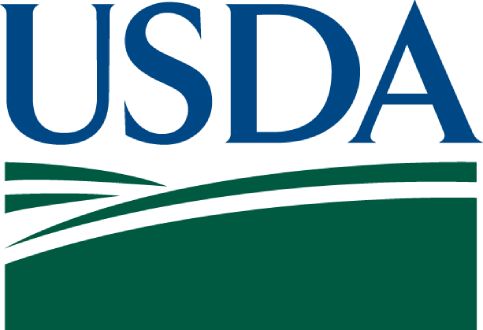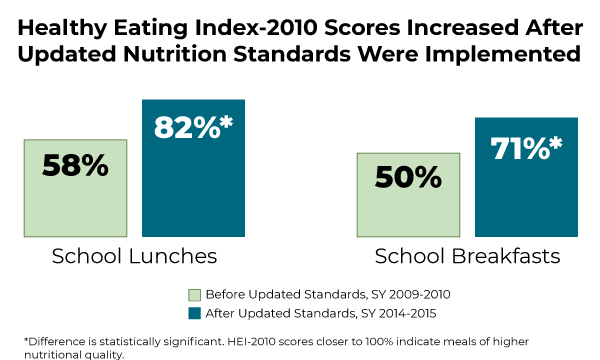The U.S. Department of Agriculture’s Food and Nutrition Service (FNS) administers the school meal programs—the National School Lunch Program (NSLP) and the School Breakfast Program (SBP)—to ensure that school-age children have access to nutritious meals and snacks to support their growth and development.
In school year (SY) 2012–2013, the school meal programs began to undergo widespread changes, including new requirements that affect the food and nutrient content of school meals; the types of foods students need to select in order for their meal to be eligible for Federal reimbursement; pricing for full-price meals; and the types of foods and beverages that can be sold in schools during the school day (“competitive foods”).
All these reforms have important implications for the school meal programs. For example, while the updated nutrition standards are intended to improve the nutritional quality of school meals, complying with the standards may affect the costs schools face in producing school meals, and meals that comply with the updated standards may not be as acceptable to students as some of the former choices. This, in turn, could lead to changes in student participation or increases in the amounts of food students waste. Student participation may also be affected by a requirement that students must take at least a half cup of fruits or vegetables or the prices charged for full-price meals.
The School Nutrition and Meal Cost Study (SNMCS) assessed these critical issues in SY 2014-2015, two years after the major reforms went into effect. Data were collected from nationally representative samples of 518 school food authorities (SFAs), more than 1,200 schools (completed sample sizes vary by data collection instrument), 2,165 students, and 1,850 parents. In addition, plate waste observations were completed for 6,253 lunch trays (in 165 schools) and 3,601 breakfast trays (in 154 schools). The SNMCS continues FNS’s long-standing commitment to periodically assess the school meal programs. Compared to prior studies, the SNMCS is unique in three important ways. No previous national study of the school meal programs has (1) simultaneously examined the nutritional quality of school meals and the cost of producing those meals; (2) assessed students’ acceptance of school meals in a quantitative way, using data on the amount of food students waste (plate waste); or (3) examined associations between major outcomes of interest, for example, the association between the nutritional quality of school meals and student participation and the association between the cost and nutritional quality of school meals.
Mathematica conducted the SNMCS for FNS and worked with three subcontractors—Abt Associates, Agralytica, and Relyon Media LLC.
We are continuing this important work with the SNMCS-II. The SNMCS-II will largely replicate the SNMCS data collection in SY 2019-2020 and will provide updated information about program operations, the nutritional quality of school meals, school meal costs and revenues, plate waste, and students' dietary intakes. Comparison of data from the SNMCS and SNMCS-II will provide information about how the school meal programs and these key outcomes may have changed in the five years since the SNMCS was conducted.
In addition, the SNMCS-II includes a separate component to assess the feasibility of conducting an in-depth assessment of meal costs in five outlying areas—Alaska, Guam, Hawaii, Puerto Rico, and the U.S. Virgin Islands—and potentially conduct the assessment in one or more areas.
On the SNMCS-II, Mathematica is working with four subcontractors—Agralytica, Decision Information Resources, Insight Policy Research, and Relyon Solutions LLC.





